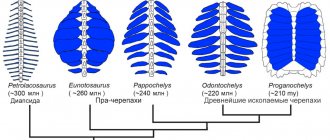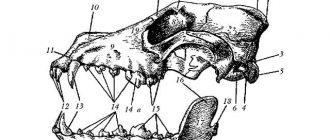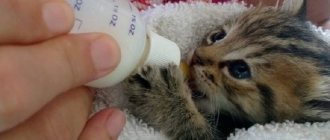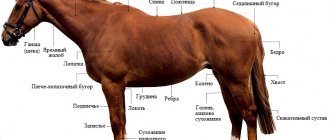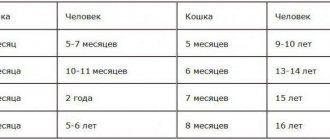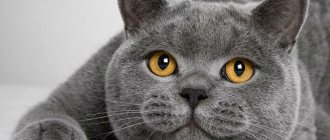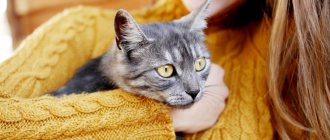It is recommended to study a description of the anatomy of a cat’s body with detailed pictures together with younger family members who are not particularly careful when handling the animal. They learn how fragile these pets are and how easy it is to harm them during active play.
General structure and functions of the cat skeleton
The skeleton of a cat is similar to that of a dog, except for certain distinctive features. It is characterized by a larger number of segments responsible for the plasticity and mobility of the torso of representatives of this family.
The horizontal arrangement of the totality of the bones of the cat’s body determines the special position and shape of each element that forms the bone apparatus. These factors distinguish cats from upright creatures such as humans.
The skeleton of representatives of the cat family includes 40 more segments than the human one. The average number of seeds that form it is from 244 to 250 pieces. These are indicative figures. A number of sources indicate that the number of bones varies between 230–236. This difference in these data is explained by the fact that some bones fused together are considered as a single element.
The length of the animal's tail depends on the number of bones in the cat's skeleton. This organ contains almost 1/10 of all the bones in the cat’s body. On average it contains about 26 vertebrae. The totality of bones in the body of representatives of the cat family has 2 sections: axial and peripheral. The first includes the skull, spine and chest, the second - the limbs.
Internal structure of a cat
The organs of a cat are basically the same in location and function as the organs of other mammals. A cat has skin, skeleton, heart, respiratory, circulatory, digestive and reproductive systems. A cat's skin is very elastic and mobile, it has many muscles and blood vessels, as well as sebaceous glands that secrete fluid, which the cat distributes throughout the coat when licking, providing it with smoothness. The structure of internal organs is largely determined by the evolution and characteristics of the species.
Skeleton
There are more than 240 different bones in the skeleton of a cat, and, as you can see in the photo of the cat’s skeleton: at one end of the spine there is a head, at the other there is a tail, like all vertebrates. A cat's bones have many functions: they form the basis of its body and also protect its internal organs from damage. For example, the structure of the skull is such that its bones protect the brain and organs of vision, and the ribs protect the heart and lungs. The bones of the cat's inner ear perform the function of transmitting sound, due to which the cat has hearing. Kittens are born with all bones, and by the end of the first year of life they usually reach their maximum size.
Internal organs
The structure of the organs of cats is basically the same as that of all mammals. The main organ is the heart, located inside the chest, behind the ribs and consists of 2 atria and 2 ventricles. The weight of the heart is usually approximately 0.6% of body weight. A cat's respiratory system is designed to function in a wide variety of environmental conditions. The photo of the structure of the organs perfectly reflects the digestive system of a cat, which has several features: saliva begins to break down food in the oral cavity, and this process continues in the stomach, and then in the small intestine (its length is 4 times the length of the cat). A cat's kidneys are located in the abdominal area and perform the functions of removing toxins and maintaining water balance.
General information
What is the anatomy of a cat's skeleton? As mentioned above, the animal’s body is divided into regions. In the head there is a face and a skull. The latter contains the anterosuperior part, the crown, the back of the head, the forehead, and the temple. The face is distinguished by the intermaxillary, buccal, orbital, oral, buccal and nasal regions. The cat's neck runs from the back of the head to the shoulder blade. The body is divided into a chest with a corresponding cavity and a back. The mammary glands are located on the chest. The back is divided into two vertebral regions. One is thoracic, the second is interscapular. In the last one on the left, in the area of the elbow joint, there is a cardiac part. The abdomen is divided into posterior, middle and anterior regions.
Animal spine
In the structure of a cat's skeleton, the longest element is the spine. It has incredible flexibility, which is due to the presence of tiny movable bones. This part of the cat's skeleton is formed from many vertebrae, divided into sections such as cervical, thoracic, lumbar, sacral and caudal. Each of them has certain characteristics and deserves special attention.
It is noteworthy that the tail is considered an integral part of the cat's spine. This organ is responsible for maintaining the animal’s balance during jumps and falls.
Cervical region
This section is formed by the larger 7 vertebrae, which are responsible for the support and mobility of the animal’s head. Two of them, called epistropheus (axial, axis) and atlas, are endowed with the unique ability to rotate 180 degrees. These vertebrae are connected to each other by a thin finger-like process.
Due to the increased fragility of such a connecting element, the epistrophy and atlas are considered the most vulnerable parts of the cat’s body, since when injured (impacts, falls from a great height), there is a high probability of damage to the process connecting them, which leads to a fracture of the cervical vertebrae and the death of the animal.
It is for this reason that experts do not recommend using a belt in this part of the cat’s body. Despite its flexibility, the cat's skeleton consists of several extremely fragile elements, which in some cases can be damaged. Under normal conditions, the animal's neck is completely safe. Unlike a belt, a flea collar is completely safe for such a pet.
Chest and ribs
This section of the cat's spine includes 13 vertebrae. 24 rib bones are attached to them on both sides. The first 5 pairs of ribs are called true, because they are attached to the sternum. The remaining ribs, which have an arched shape, are usually called false (false). Thanks to this structure of the rib bones, the flexibility of the animal’s body and its ability to turn around even in conditions of very limited space are ensured.
Muscular system
Cats have an unusually developed muscular system. This is proven by their amazing jumps over fairly long distances and fast running. Also, a set of muscles helps the cat maintain its aristocratic bearing.
Thanks to its developed muscular system, a cat is able to perform amazing movements.
In total, a cat has about 500 muscles. They can be divided into 3 categories:
- heart muscle;
- smooth muscles, which control internal organs and work involuntarily;
- striated muscles that the cat controls itself.
Special fibers are part of all muscles. Cat muscles contain 3 types of cells:
- are strongly contracted, but work for a short time - thanks to them, the cat is able to jump long distances; the strength of these cells is not able to act for long;
- with a strong contraction they work for a long time - a cat has few such cells, which explains its inability to run long distances;
- they contract quietly and work for a long time - this type of muscle cells is used in a cat when hunting, when it sits in ambush for a long time, and also sneaks quietly and gently.
When hunting, a cat uses muscle cells that can work for a long time
The structure of the shoulder girdle has a peculiarity: the muscles connect the forelimbs and the torso, while in humans they are connected by the collarbone. In cats it is in its infancy.
To take a step, the cat pushes off with its hind paws, and the front paws participate in the braking process. Thanks to the elasticity of the back muscles, the cat can easily curl into a ball and assume other bizarre poses.
Scull
Due to the smaller number of teeth compared to other predators, the cat's skull is characterized by a rounded shape. Its size will depend on belonging to a particular breed or other hereditary characteristics. Representatives of the Persian, exotic and Himalayan breeds are brachycephalic - owners of a shortened skull, which is why they have an abnormal structure of the palate, larynx and trachea. This explains the common problems in these breeds with impaired nasal breathing, snoring and poor tolerance to exercise and heat.
The skull consists of 29 bones, with the brain part being formed from 11, and the facial part from 13 bones. The bones of the skull themselves are larger in size compared to the facial bones. Characteristic features also include large eye sockets and narrowly spaced fangs, adapted for hunting small animals. The main attribute of a predator, which is a cat, is a powerful jaw, which is equipped with different types of teeth. They allow you to grab and hold resisting prey, bite and grind food, and defend yourself if necessary.
Hind limb belt
The main difference between this belt and the previous one is that it is firmly and motionlessly attached to the sacrum. In addition to the kneecap, it consists of the following types of bones:
- pelvic;
- femoral;
- tibia;
- tibia;
- tarsal;
- metatarsal.
The phalanges of the fingers are attached to the last bone. Unlike the forelimbs, the pelvic bones of the hind limbs are longer and more developed. At the same time, the metatarsal bones are more massive, which is due to the peculiarities of movement of representatives of this family, in particular, the tendency to jump.
Thanks to the special structure of their paws, animals are endowed with the ability to move quickly both on horizontal and vertical surfaces. This is why they are excellent tree climbers.
The support for the hind limbs of cats is the phalanges of the 4 fingers. Like other mammals, the elbows of representatives of this family have the ability to bend in the posterior direction, and the knees - in the anterior direction. The part of the paw that might be mistaken for a bent knee is actually the heel, and the true knee is actually located in the cat's lower abdomen.
Share with friends!
Sense organs
Features of hearing and eyes
A cat's vision provides good vision of its surroundings at night. They distinguish objects and people that move quickly, so these animals are natural hunters. Biological features are the shape of the pupils. They are long and oval. The eyes are closed with the outer and inner eyelids, which prevents external influences. A cat's ear can move to detect the source of a sound. The hearing organs have a unique structure inside and can distinguish the tonality of sound. A cat's hearing acuity is superior to that of a human. If an animal fights, it presses its ears to its head so that they do not get hurt. The movement of the hearing organs occurs with the help of muscles, of which there are 32.
Taste buds
The role of the taste organ in cats is performed by the tongue, which is covered with papillae, giving the surface a rough appearance. Cats easily remove meat from bones and debris from fur by licking it. The tongue contains nipples, which are responsible for the perception of taste. They, unlike other animals, do not perceive sweets. Cats like sour and salty foods. Its anatomical structure prevents cats from spitting out food or dirt from their fur that gets into their mouth, so they swallow everything.
Smell and touch
The organ of smell is the nose. A cat's sense of smell helps determine whether food is fresh. They have a Jacobson organ. It is located in the sky. When cats raise their upper lip, they draw air into their nose through this organ. A cat uses scents to find food, game, or to mark its territory. The tactile organ is the mustache. They have many nerve endings, which provides good orientation in the area. At night, the cat is self-confident. The mustache is connected to visual receptors, through which external factors are recognized.
Anatomical features
Dog skeleton: skull anatomy, structure of ribs and internal organs
The cat is the perfection of nature. She has no equal in the variety of physical capabilities. Cats masterfully jump, climb, balance, run, and react with lightning speed to danger. The most important part of a cat's body is its internal organs. The relationship between the nervous system and muscle performance makes the pet an excellent hunter.
Digestive system
The digestive system consists of organs responsible for processing food. Food enters the mouth and passes through the esophagus, stomach, small and large intestines before passing through the anus as solid waste.
The digestive system is structured almost the same as in humans
The system includes:
- mouth;
- teeth;
- language;
- salivary glands;
- esophagus;
- stomach;
- mucous membranes of the stomach;
- small intestine;
- large intestine;
- pancreas;
- liver;
- gallbladder.
Digestion of food occurs in 2 stages:
- mechanical. Food is crushed by teeth;
- chemical. Food is broken down into nutrients, which are absorbed into the blood through the walls of the small intestine.
Sense organs
The animal body has five sense organs: visual, equilibrium-auditory, olfactory, gustatory and tactile. Each of these bodies has departments:
- peripheral (perceiving) - receptor;
- middle (conductive) - conductor;
- analyzing (in the cerebral cortex) - brain center.
The cat's sense organs are a miracle of nature.
Features of the sense organs:
- the shape of the ears allows the cat to direct sound into the funnel. The ear tubes are lined with fine hairs that pick up sound vibrations;
- the sharpness of taste depends on the Jacobson's tube, which is also an organ of smell, which allows the animal to avoid accidental poisoning;
- cats have a very good sense of smell as they have 70 million olfactory cells inside their nose. Every contact with another living creature involves preliminary sniffing;
- Cats have a very well developed sense of touch. Most of the skin surface does not feel contact with hot surfaces at all, but the upper lip and nose are very sensitive. They receive signals and information from even the slightest air fluctuations;
- the animal moves its whiskers due to the presence of short small muscles located at the very roots.
Pets have vision, hearing, smell, touch and taste. This allows them to recognize smells, hear noises over long distances, and see in the dark.
Circulatory system
An important organ of the circulatory system is the heart, which is a muscle weighing 0.6% of the animal’s weight. It drives blood through two circles of blood circulation. Moving through the arteries and capillaries, the blood is saturated with the products of cellular activity and carbon dioxide, enters the veins and is sent through the heart through the second (lesser) circulation.
For your information! A 4 kg cat has approximately 0.2 liters of blood. Its composition and characteristics are still poorly studied. Veterinary medicine has described cases where a cat was not affected by doses of snake venom, even many times greater than lethal doses for other living beings.
Reproductive system
The reproductive system of cats is a set of organs and processes in the body aimed at the reproduction of offspring. It develops over a long period of time and varies by gender. The internal structure of a cat differs from the structure of a cat in its reproductive system. Outwardly, this manifests itself in the fact that in cats the scrotum is located just below the anus, in cats there is a slit-like vagina (vulva) in this place. Cats reach sexual maturity at 6-8 months. This means that the animal reaches physiological maturity and can be used for reproduction.
Depending on the breed, maturity appears at the age of 10 months to 1.5 years. To get full-fledged offspring, mating can only be done from this age of the pet. X-rays are used as an additional measure to monitor late pregnancy in cats.
Nervous system
The internal organs of cats are located in the same way as those of other mammals, have almost the same structure and perform similar functions.
The nervous system is responsible for transmitting messages to and from the brain and spinal cord. The spinal column is protected by bony dorsal vertebrae.
The nervous system is structured the same as that of all other mammals
The nervous system is divided into two parts:
- central. Consists of the brain and spinal cord, which are protected by a bony membrane: the skull (brain) and the spine (spinal cord);
- peripheral. Consists of nerves that connect the central nervous system with other parts.
The nervous system of cats, both central and peripheral, is well developed and functions properly. Activity is carried out using the senses: hearing, vision, smell, taste and touch. Fully develops as the kitten matures.
Respiratory system
The anatomy of a cat is not much different from other mammals. This also applies to the respiratory system, which is responsible for bringing oxygen into the body and removing waste in the form of carbon dioxide.
The system includes:
- nose;
- pharynx;
- larynx;
- trachea;
- bronchi (small airways);
- lungs.
The lungs have the shape of a truncated cone, the apex of which is located in the area of the first ribs, and the base is concave and corresponds to the dome of the diaphragm.
Brain and endocrine system
The brain is a mass of soft, pinkish-gray nervous tissue divided into three main sections:
- brain stem;
- brain;
- cerebellum.
A cat's brain consists of a billion neuron cells, and each cell has up to 10 thousand connections with other cells. The brain occupies 0.9% of the total body weight.
The brain occupies 0.9% of the total body weight
The endocrine system is responsible for the endocrine gland to regulate the body. It includes:
- hypothalamus;
- pituitary;
- thyroid gland;
- parathyroid glands;
- adrenal glands;
- part of the gastrointestinal tract;
- pancreas;
- kidneys;
- liver;
- ovaries and testes.
The endocrine system is distributed throughout the body as follows:
- the hypothalamus is located at the base of the brain;
- The pituitary gland is located at the base of the brain and is attached to the hypothalamus through a stalk-shaped cartilage;
- The thyroid gland is located in the neck below the larynx (voice box);
- there are two parathyroid glands located in the neck, closely related to the thyroid gland;
- there are two adrenal glands located in the abdominal cavity just in front of the kidneys;
- the gastrointestinal tract (GIT) is located in the abdominal cavity;
- pancreas in the front of the abdominal cavity, behind the liver and stomach;
- the liver is located in the front of the abdomen just behind the diaphragm;
- the ovaries are located in the middle part of the abdominal cavity next to the kidneys;
- The testicles are placed in the scrotum.
Leather and wool
Skin and hair cover the cat's entire body. The skin protects the muscles, skeleton and internal organs. Hair is located on the outer part of the skin.
Skin consists of:
- outer cellular layer;
- an avascular layer called the epidermis;
- inner fibrous corium, or dermis.
The epidermis is the body's shield. It consists of hard, keratinized cells. The dermis is made up of connective tissue that contains nerves, blood vessels, hair follicles, sweat and oil glands.
From each follicle in cats, two types of hairs grow: covert (awn) and secondary - downy.
A cat has four different types of hairs:
- The undercoat is the hairs closest to the skin. Their diameter does not change from root to tip. The main function is to protect the body from cold;
- guard hairs form the middle layer of the coat. They are bristly with a slight expansion in front of the tip;
- The protective coat forms the top coat and protects the undercoat and midcoat from external influences. It tapers evenly from root to tip;
- vibris - long, stiff and sensitive hairs that are used as organs of touch. These are mustaches, hair on the cheeks, chin, eyes and on the wrists of the front paws.
The camouflage function is manifested in the variety of shades of wool.
For your information! The sebaceous glands secrete fat rich in vitamin D.
Cat reproductive system
The reproductive system is an organ system designed for reproduction.
How does the genitourinary system work?
This system in a cat includes:
- the ovaries are responsible for childbirth by producing follicles;
- the tubes serve as a place for fertilization of the egg, creating a favorable environment for this;
- vulva is a general term that refers to all female genital organs located externally;
- The uterus is created for the development of the embryo and its birth.
Occurring ovulation provokes the cat to mate.
Anatomy of the cat's reproductive system
In cats, two testes (testicles) are located in the scrotum, which is located below the anus. The testes produce sperm, which pass through a system of efferent tubules into the epididymis (epididymis), where they are stored.
The cat managed to preserve the behavior pattern inherent in its wild ancestors; it hunts almost as well. The skeleton, muscles and nerves are designed for sudden sharp movements and jumps, an ideal sense of balance allows her to climb high and live in three dimensions. The digestive system is capable of digesting food, and the secretions are used to communicate with other cats. Thanks to the structure of the brain, a cat is able to learn throughout her life, and her unique senses help her in this.
Digestive system
Cat skeleton: anatomy, skull, structure
The cat's insides form the digestive system, which is responsible for taking in food, processing and eliminating undigested residues. A cat’s body processes food within a day.
Participating in this process are:
- oral cavity;
- pharynx;
- esophagus;
- stomach;
- small and large intestines;
- kidneys and liver.
A cat's stomach is more acidic than a human's, so it can process rough food. The structure of a cat's intestines does not allow it to digest carbohydrates well. This must be taken into account when planning your diet.
Digestive organs
Digestion begins as soon as the food enters the oral cavity. Saliva softens food and promotes quick chewing. Then the food passes through the pharynx and esophagus into the stomach. There, the active breakdown of foods into liquid, carbohydrates, proteins and fats begins. The contents then pass into the duodenum and small intestine. Unprocessed residues form feces and pass through the rectum.
Interesting! The pet's stomach is in constant activity. This is why animals often eat, but little by little.
Teeth
The appearance of an animal's jaw always shows its feeding method. Predatory animals such as cats have dagger-shaped angular teeth. With their help, the animal can grab a resisting victim and hold it tightly. They are also called catching teeth. The main elements of the jaw are designed for cutting meat. These teeth are jagged and sharp. There are also “highly specialized” instruments present on the jaw. They act as teeth for biting. It is the last segment in the upper jaw on both sides and the first molar on the lower part (also on both sides). They capture prey from below and above, like a knife sharpened by a triangle. In this case, the meat is cut into pieces, like with scissors. Accordingly, the bones of prey break easily.
When eating, the cat almost never uses its six incisors. Perhaps their only job is to cut off the remaining meat from thick bones. However, the incisors are very actively involved in grooming the coat and skin. These elements allow you to bite out foreign particles, including dirt from the paws. The animal also uses these teeth to get rid of fleas.
Video
general characteristics
Our dogs (Canis lupus familiaris) and domestic cats (Félis silvéstris cátus) belong to the canine and feline families of the same class of mammals. All of them are carnivorous predators, actively obtaining food. These companion animals live an average of 7 to 14 years. The size of dogs varies greatly depending on the breed. With cats, everything is a little simpler - they weigh on average up to 4.5 kilograms and at the withers reach sizes of up to 25 centimeters.
These predators carry their young for about 2 months, feed them milk and sometimes show amazing care for their offspring.
There are many books and manuals on the maintenance, care, and nutrition of our pets. There are many more such books regarding dogs, which is associated with the development of service dog breeding. One of the best works on the anatomy and physiology of dogs (K. S. Stogov) is contained in all instructions for the training and education of service dogs.
Cats didn’t become service cats, but that doesn’t make people love them any less. Existing atlases of anatomy and physiology in pictures of dogs and cats provide a complete understanding of the similarities of these animals.
Origin of pets
Both cats and dogs descended from wild ancestors. Wolves became the predecessors of dogs, but a more sedentary lifestyle led to significant differences in the anatomy and physiology of dogs from their wild ancestor. And yet, all dog breeds have a similar structure.
The ancestors of cats were wild cats. In the process of domestication, they became less long-legged. And numerous crossings with wild cats of Asia and Europe provided material for breeding long-haired breeds.
How to protect your pet from bone problems
The skeleton of cats and dogs begins to form in the second and last third of the mother's pregnancy, and continues to develop until the animal reaches puberty. But even after this, the skeleton does not remain constant; many factors can influence the bones.
That is why caring for your pet’s skeleton begins with proper and complete feeding of the mother. A growing body requires sufficient amounts of calcium and phosphorus in the diet. In this case, there should be more calcium than phosphorus. With an excess of phosphorus and a lack of calcium, the latter is washed out of the bone tissue and the “butcher’s dog effect” or hyperparathyroidism is observed. Excess calcium will also not be beneficial; it contributes to disturbances in the formation of cartilage.
It should be remembered that calcium is absorbed only in the presence of vitamin D. As is known, the body produces it under the influence of ultraviolet radiation. But an excess of vitamin can be very dangerous - it leads to kidney damage and digestive disorders.
Thus, an animal of any age needs a balanced diet that meets the body’s needs.
But there are other factors that influence the formation of the skeleton. Thus, early castration stops the production of sex hormones, which can cause bone underdevelopment. Long-term use of diuretics, corticosteroids, or antibiotics leads to bone loss of calcium, interruption of vitamin K production, and demineralization of bones.
Cat bones and joints
The graceful silhouette of cats is formed by the skeleton and muscles. Kittens can differ significantly in their proportions from adult animals. Often teenagers seem angular and awkward. A newborn kitten already has the necessary set of muscles, ligaments, bones and joints. During the growth process, their number does not increase, only their sizes change.
Bones are a hard organ consisting primarily of bone tissue. The bone structure also includes nerves, blood vessels, cartilage, and periosteum. Bone tissue is made up of minerals (mainly calcium and phosphorus).
The skeleton forms the skeleton of a cat's body. Bones perform not only a musculoskeletal function, but also a protective function. The bones of the skull protect the brain from mechanical damage, and the ribs help keep the heart and other internal organs intact. On average, cats have about 240 bones. Their exact number depends on the length of the tail of each individual individual.
At the ends of the bones there is an epiphysis - soft cartilaginous tissue. It is she who is responsible for the growth of bones in kittens. Typically, active bone growth in cats is observed before they reach one year of age. Due to the soft epiphysis, the bones of kittens are very fragile, so they are often injured. After reaching one year of age, the pineal gland is saturated with minerals (mainly calcium) and hardens.
Cats have the following number of vertebrae:
- 7 cervical;
- 13 breast;
- 7 lumbar;
- 3 crosses;
- up to 24 tail.
The spine and skull serve to protect the central nervous system. The thoracic vertebrae, ribs and sternum form the rib cage. Cats do not have collarbones, and therefore the limbs and chest are attached to each other using strong muscles and tendons. Thanks to this feature, cats can jump from great heights.
The forelimbs consist of:
- radius;
- humerus;
- ulna;
- shoulder blades;
- wrists;
- the bones of the paw itself.
The hind limbs consist of:
- pelvic bone;
- hips;
- shins;
- kneecap;
- heels;
- metatarsal bones;
- phalanges of fingers.
Cats literally walk on their toes rather than stepping onto surfaces with their entire foot. The cat has 5 toes on the front paws (one of the toes is shortened and does not touch the surface when walking), and on the hind paws there are 4 toes (the thumb is missing, but you can see the heels). On the fingers there are leather pouches in which the claws are hidden. If desired, the cat can release them instantly.
The skull consists of the brain and facial sections. The first has 11 bones, and the second 14. The kitten erupts its teeth at three weeks of age. There are 26 of them in total. At about six months of age, they are completely replaced by permanent teeth.
Cats are predators, and the structural features of their jaw are associated with this fact. An adult animal has 30 teeth: 12 incisors, 4 canines, 10 premolars and 4 molars.
Joints are movable joints of the skeleton. In cats, there are three types of joints: synovial and cartilaginous, sutures. It is thanks to the joints that the cat's body is so mobile.
The cartilaginous joints of cats are highly flexible, allowing the animal to take various “uncomfortable” positions. The sutures are motionless; they are located between the fused parts of the skull. They have a fairly fibrous structure.
Synovial joints serve to move bones together. At the junction, the bone is covered with cartilage tissue, which is surrounded by a smooth capsule filled with synovial fluid. Due to the mobility of these joints, the cat can run fast and jump high.
You might be interested in: Is it dangerous for a cat to have crusts on its ears?
